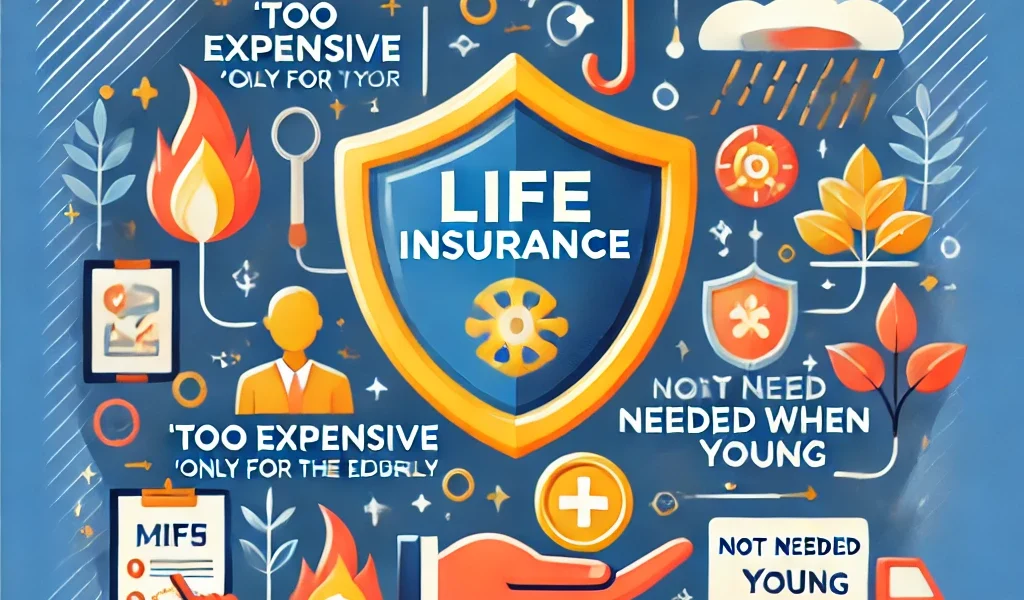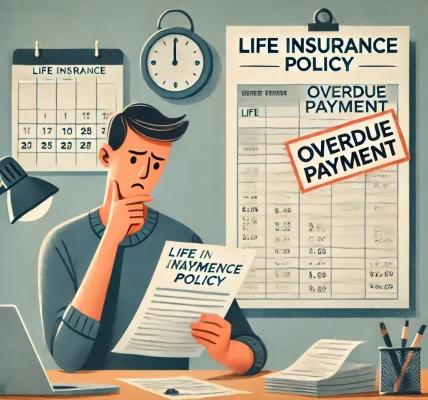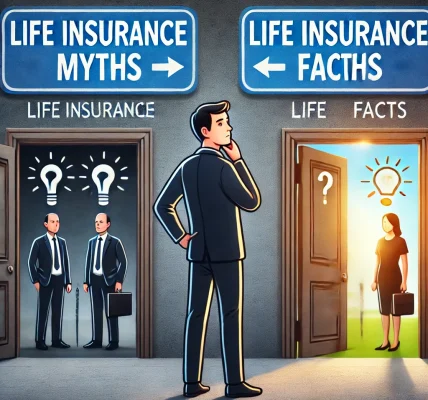Introduction
Life insurance is an essential financial tool that provides security and peace of mind. However, many people avoid purchasing life insurance due to widespread misconceptions and myths. These myths can lead to delayed decisions, inadequate coverage, and financial instability for families in times of crisis.
In this guide, we will debunk the most common myths about life insurance, ensuring that you make well-informed decisions for your financial future.
Myth #1: “Life Insurance Is Only for Older People”
✅ The Truth:
Life insurance is not just for the elderly. The younger you are, the cheaper and more beneficial life insurance can be. Buying a policy at an early age means:
- Lower premiums due to better health conditions.
- More coverage options to suit your needs.
- Long-term financial security for your loved ones.
Even young adults should consider life insurance, especially if they have dependents, student loans, or long-term financial goals.
Myth #2: “I Don’t Need Life Insurance If I’m Single and Have No Kids”
✅ The Truth:
While life insurance is often associated with providing for dependents, it serves many purposes beyond just supporting children or a spouse:
- Covers funeral and medical expenses to avoid burdening your family.
- Helps pay off debts such as student loans, credit card balances, or personal loans.
- Provides future insurability, meaning you can lock in lower rates for when you do have dependents later.
If you have financial responsibilities or outstanding debts, life insurance can protect your family members from financial strain.
Myth #3: “Life Insurance Is Too Expensive”
✅ The Truth:
Many people overestimate the cost of life insurance. According to surveys, people think life insurance is three times more expensive than it actually is!
Affordable options like term life insurance offer significant coverage for lower monthly premiums. The cost depends on factors like:
- Age and health condition
- Type of policy
- Coverage amount
For example, a healthy 30-year-old can get a $500,000 term life policy for less than $30 per month.
Myth #4: “Employer-Provided Life Insurance Is Enough”
✅ The Truth:
Many employers offer life insurance as part of their benefits package, but relying solely on employer-provided coverage can be risky:
- Most policies cover only 1-2 times your salary, which may not be enough.
- You lose coverage if you leave the job or switch careers.
- You may not have control over the policy terms.
Having an individual policy ensures continuous coverage, regardless of your employment status.
Myth #5: “Stay-at-Home Parents Don’t Need Life Insurance”
✅ The Truth:
Stay-at-home parents provide significant financial value through childcare, household management, and daily responsibilities. If something happens to them, the surviving partner may need to pay for services such as:
- Childcare
- Housekeeping
- Cooking and home maintenance
Life insurance can help cover these costs, ensuring that the family’s financial situation remains stable.
Myth #6: “I’m Healthy, So I Don’t Need Life Insurance”
✅ The Truth:
While good health may reduce immediate risks, accidents and unexpected illnesses can happen at any time. Life insurance provides peace of mind and financial security regardless of your current health.
Moreover, getting life insurance while you’re healthy allows you to secure lower premiums. Waiting until health issues arise could result in higher premiums or even denial of coverage.
Myth #7: “Life Insurance Payouts Are Taxable”
✅ The Truth:
Most life insurance death benefits are tax-free for beneficiaries. However, there are exceptions, such as:
- If the policyholder names their estate as the beneficiary, it may be subject to estate taxes.
- If a policy is part of a large estate, it might be subject to estate tax laws.
To maximize tax benefits, consult a financial advisor to structure your policy properly.
Myth #8: “Term Life Insurance Is Better Than Whole Life Insurance (or Vice Versa)”
✅ The Truth:
There is no universal “better” policy—it depends on your needs.
- Term life insurance: Affordable, covers a specific period, ideal for temporary financial protection.
- Whole life insurance: Offers lifetime coverage, builds cash value, suitable for long-term financial planning.
Evaluate your financial goals and budget before choosing between term or permanent life insurance.
Myth #9: “You Can’t Get Life Insurance If You Have Pre-Existing Conditions”
✅ The Truth:
While pre-existing conditions may affect premiums, they do not always result in denial. Many insurers offer policies for individuals with:
- Diabetes
- High blood pressure
- Heart conditions
Some insurers even provide guaranteed issue life insurance, which does not require a medical exam. Always shop around to find the best policy.
Myth #10: “Once I Buy a Policy, I Never Need to Review It”
✅ The Truth:
Life insurance needs change over time. It’s essential to review your policy when major life events occur, such as:
- Marriage or divorce
- Birth of a child
- Buying a home
- Career changes
- Retirement planning
Regularly updating your policy ensures it aligns with your current financial situation.
Conclusion
Misconceptions about life insurance often prevent people from making informed decisions. By debunking these myths, you can:
✔️ Choose the right policy that fits your financial goals.
✔️ Ensure your loved ones are financially protected.
✔️ Make life insurance a strategic part of your long-term plan.
If you’re unsure about the best policy for you, consult a financial advisor or insurance expert to get personalized recommendations.
SEO Keywords Used:
- Life insurance myths debunked
- Common misconceptions about life insurance
- Truth about life insurance policies
- Life insurance benefits explained
- Affordable life insurance options




